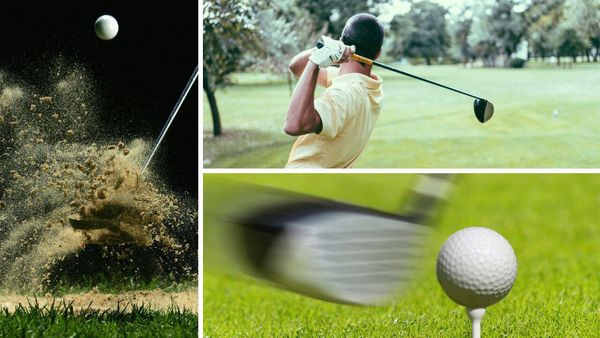If you've ever watched golf on TV, you've probably heard the commentators talk about "match play." But what exactly is match play, and how does it differ from the more familiar "stroke play?"
In short, it's the best way to settle scores on the golf course. Here's everything you need to know about this fun and competitive format.
What is Match Play?
Match play is a format in which players compete against each other one-on-one, rather than competing for the lowest score relative to par. And unlike stroke play, it doesn't matter what everyone else's score is; all that matters is who had the lowest score on that one hole. The goal is to win as many holes as possible. The winner is determined by whoever wins the most holes.
For example, Player A and Player B play six holes of match play. Let's say that Player A wins four holes and loses two holes against Player B. Even though Player B technically has a lower score than Player A, they would still lose the match because they only won two holes while Player A won four.
At the end of 18 holes, if one player or team has won more holes than there are remaining holes to be played, then they are declared the winner and the match is over. However, if both players or teams have won an equal number of holes at that point, then the match is considered "all square".
In stroke play, the goal is simply to complete the course in as few strokes as possible. Your score for each hole is compared to that of the other players in the field, and the winner is the one with the lowest total score for all 18 holes.
How to Win at Match Play
The key to winning at match play is to be aggressive when you can. Since you're only playing against one opponent, there's no reason to hold back. If you have a chance to go for a birdie or an eagle, take it! The worst that can happen is that you make bogey or double bogey and lose the hole. But if you make birdie or eagle, you'll put your opponent under pressure and could potentially win the hole outright.
However, there are also times when playing conservatively makes more sense. Let's take a closer look.
You're both teeing off on a par 5 with water in front of the green. Your opponent tees off and hooks his tee shot out of bounds. He retees and launches his third shot to the middle of the fairway. You hit your drive to the right side of the fairway. You're lying 1 in the fairway; he's lying 3. You could go for the green in two but it's pushing your distance limits. Plus there's water in front of the green. So you play conservative and lay up because you know your opponent is in trouble.
Another important tip for winning at match play is to stay calm and composed. It can be easy to get wrapped up in the emotions of competition, but try to keep your cool and focus on your own game. If your opponent starts getting ahead, don't worry—just keep plugging away and trust that your skills will eventually prevail.
Finally, be smart about conceding putts and holes. Unlike in stroke play you are allowed to concede putts and holes in match play. If your opponent has a simple 2-footer and you're likely to lose the hole concede the putt. But if it's a tricky 2-and-a-half footer to tie the hole then don't concede the putt.
So there you have it—everything you need to know about match play golf. Remember, the key to winning is being aggressive when it makes sense and conservative when your opponent is in trouble. And of course, staying calm under pressure.
So next time you're on the golf course with some friends, settle things once and for all with a friendly game of match play!
If you can't make it to the golf course but are dying to play maybe it's time to invest in a golf simulator. If interested see below.










Member discussion